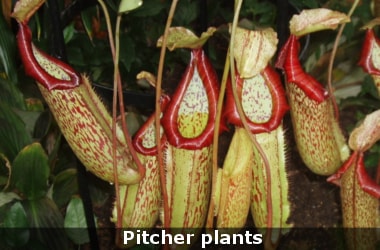
According to new study was published in the journal Nature Ecology and Evolution, scientists have identified the evolutionary pathway that led some plants to turn carnivorous.
The new finding explains why pitcher plants (carnivorous plants) from different parts of the world appear strikingly similar despite having evolved independently.
Pitcher plants or carnivorous plants grow in very nutrient-poor habitats.
Just like other plants, they produce carbon through the usual photosynthetic processes.
However, their habitats do not provide enough phosphorus and nitrogen for their growth. They obtain these essential nutrients feeding on insects.
These plants capture insects by luring them into a trap, a cupped leaf with a waxy, slippery interior that makes it difficult to climb out.
A blend of digestive fluids sits at the bottom of cupped leaf’s chamber that breaks down the flesh and exoskeletons of prey.
The study had probed the origins of carnivory in several distantly related pitcher plants from Australia, Asia and America, which appear strikingly similar to the human eye.
Though, each species of the pitcher developed carnivory independently, scientists concluded that the biological machinery required for digesting insects evolved in remarkably similar fashion.
The similarity for has long been known to be an example of convergent evolution in which distinct species independently develop the same traits.
These plants have a genetic tool kit so they look similar, with a cupped, waxy leaf that is slippery on the inside to trap insect inside.
During the course of their evolution, digestive fluid of these plants co-opted for proteins that were originally used to defend against disease, and repurposing them into enzymes that could aid the digestion of insects.
These plants have enzymes basic chitinase, which breaks down chitin the major component of insects’ hard, exterior exoskeletons and purple acid phosphatase.
This enables them to obtain phosphorus, a critical nutrient, from victims’ body parts.